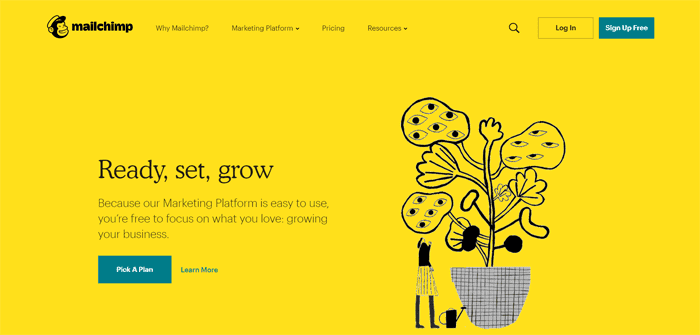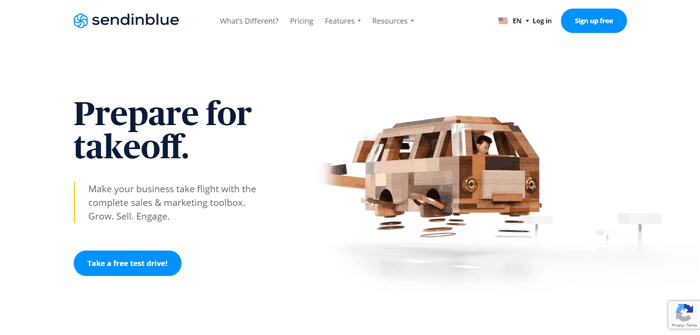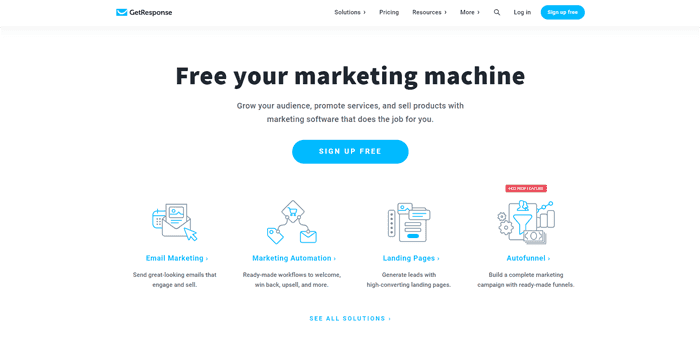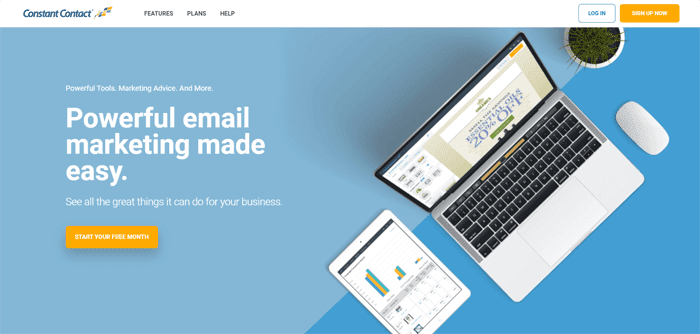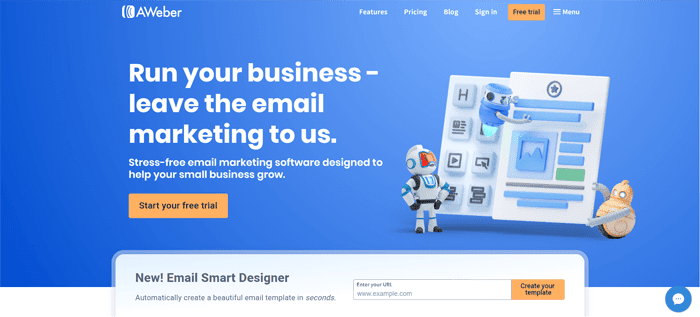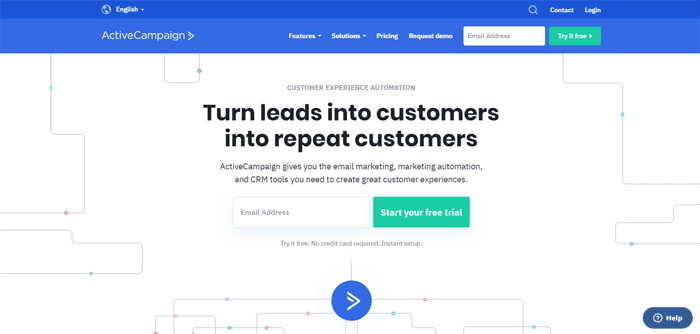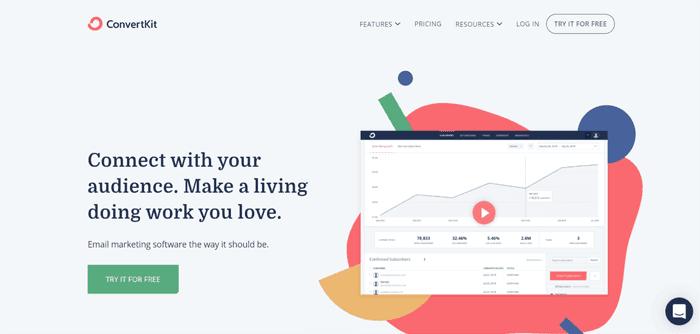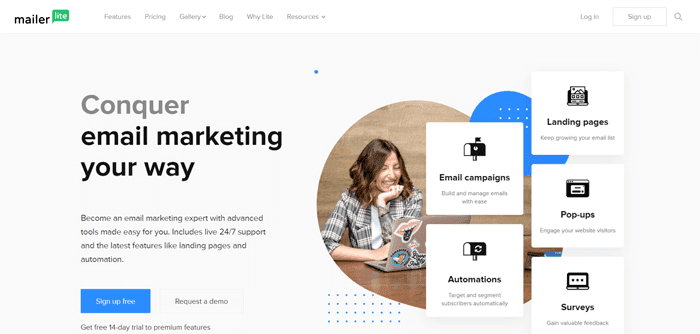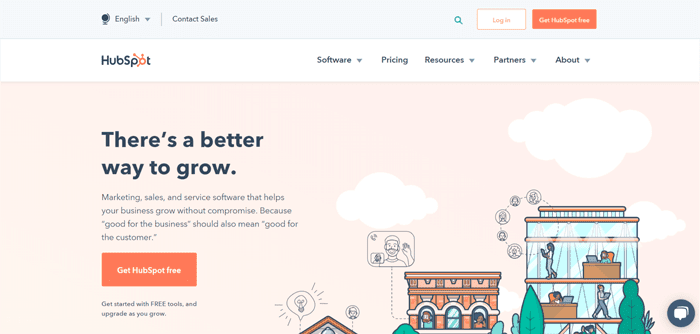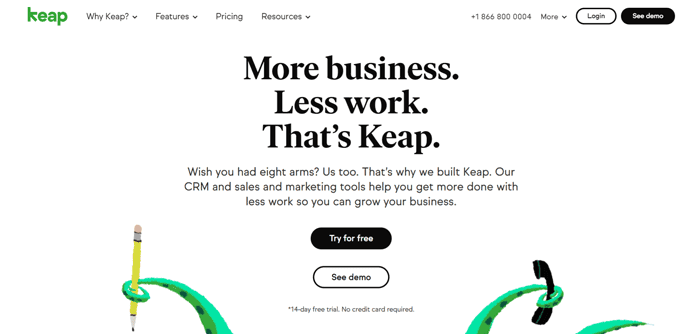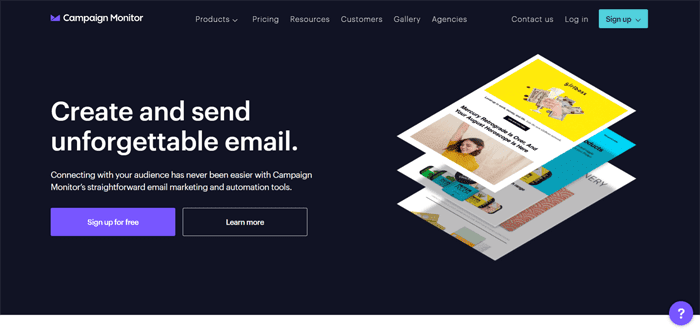You’ve watched artists, performers and writers like Hugh McLeod, Amanda Palmer, Chase Jarvis, and Jeff Goins sell boatloads of creative work thanks to the platforms they have built from their blogs.
You tinker with your own creative projects and wonder if you could start a blog to promote them too.
But despite all the blogging advice out there, you sense that blogging for art is different.
You know you don’t want to be spammy, but have no idea how to use a blog to make money by selling those musical compositions, show tickets, short horror stories, family paintings with Fido, or handmade grandfather clocks.
The one thing artists need to be successful today
The Internet has turned selling creative work on its head.
No longer can you simply get good at your craft and then find someone to champion you, manage you, or sponsor you.
Want a publishing deal? You better have built a solid fan base for your work first.
Want a chance at a record deal or even just make a decent side income from your work? You’ll need an engaged audience and good-sized list.
For today’s artist, building a tribe is non-negotiable.
But how?
It’s not about schlepping your art or begging for attention
Like a first date, you need something more to talk about other than just your work.
People connect with people. Your blog is the place where you give fans not only the emotional experience that attracted them to you in the first place, but also ways to get to know you as a person and artist.
Your audience expects to see a different side of you on your blog.
Your job is to find these hooks – the things that your people are most curious about. Perhaps what lens you used in a photo or what inspired you to write that song. Or hilarious personal stories from your travels. Or exclusive material not available to the general public.
And since artists learn from each other, you could help others by teaching what you know.
But the secret is to get fans, clients, and customers interacting with you on many levels.
Let them get to know you and what matters to you.
Let them into your world as an artist.
What works for artists in the real world?
The theory’s nice. But how does this work in real life? How do artists succeed online?
The problem with theory – creative people are so diverse in their talents and interests that seeing how this advice applies to your own situation is difficult.
What works for a musician might not work for a painter. What delights the fans of a writer might be a complete turn-off for the fans of a filmmaker.
Even creative people in the same field might need to relate to their audiences in different ways.
But let’s say you do have some concrete ideas for your own creative blog; how do you know if they will work in practice?
What you need is some help from artists who’ve already blazed a trail and discovered what actually works.
Because some of those ideas might work for you too.
So check out the following list of excellent role models for tons of ideas.
And don’t just stick to your own field – cross-pollinate and explore ideas from other disciplines.
After all, great artists draw their influences from many places and you never know where your next killer idea will come from.
48 Creative Blogs You Can Shamelessly Plunder for Inspiration
1. Hugh MacLeod – The poster boy of blogging success for artists
 Hugh began blogging in 2001, long before most people had any idea what a weblog even was. He’s been a champion of blogging for artists ever since. Hugh has not only built an extremely successful business out of drawing on the backs of business cards, but he’s also had three best-selling books, all of which grew out of recording and sharing his thoughts on his work while he made it.
Hugh began blogging in 2001, long before most people had any idea what a weblog even was. He’s been a champion of blogging for artists ever since. Hugh has not only built an extremely successful business out of drawing on the backs of business cards, but he’s also had three best-selling books, all of which grew out of recording and sharing his thoughts on his work while he made it.
If you haven’t picked up Hugh’s books yet, do so sooner rather than later. He’s got great insight for all creative types. If you don’t mind straight talk, learn why most artists’ blogs fail.
2. Austin Kleon – “A writer who draws” and is engaging, inspiring, and funny
 Hugh MacLeod pointed me in Austin’s direction, and he’s definitely a great example to follow. Austin’s insights into his creative process are fascinating and guaranteed to draw you in. He’s written two best-selling books and is working on his third. Steal Like An Artist is a must-read for all creative types.
Hugh MacLeod pointed me in Austin’s direction, and he’s definitely a great example to follow. Austin’s insights into his creative process are fascinating and guaranteed to draw you in. He’s written two best-selling books and is working on his third. Steal Like An Artist is a must-read for all creative types.
Austin speaks regularly on creativity and has been featured at SXSW, TEDx, Google, Pixar, and The Economist.
3. Michael Nobbs – Writer and artist with a passion for consistent and sustainable creativity
 Michael is a writer and artist who has built a whole community around encouraging others to create every day, make drawing a habit, and build solid platforms to be viably creative.
Michael is a writer and artist who has built a whole community around encouraging others to create every day, make drawing a habit, and build solid platforms to be viably creative.
Like others on this list, you’ll see Michael’s work in many formats, including courses, books, an online forum, and podcasts as well as his blog.
4. Amy Ng – Illustrator and blogger with inspiration, good business sense, and lots of smiles
 Amy is a writer and illustrator from Malaysia who has been sharing creative ideas, tutorials, business guidance, and courses since 2008 at her site.
Amy is a writer and illustrator from Malaysia who has been sharing creative ideas, tutorials, business guidance, and courses since 2008 at her site.
She is a prolific blogger and her personality definitely shines through in her writing. You can’t visit her site without feeling happy.
5. Abbey Ryan – Classic still life and trompe l’oeil artist who connects with a painting a day
 Abbey started blogging in 2007, posting a painting a day. Since then she’s attracted over a half million visitors from 100 countries to her site. She has an unassuming and generous style that endears her students and readers to her.
Abbey started blogging in 2007, posting a painting a day. Since then she’s attracted over a half million visitors from 100 countries to her site. She has an unassuming and generous style that endears her students and readers to her.
Her work is beautiful and her blog commentary centers around her experiences while creating each piece – stories about the objects she paints, what part of the world she’s in, and the people she paints with. She’s been featured in O, The Oprah Magazine, and Seth Godin’s Linchpin.
6. Ed Terpening – Plein air painter with plain good advice and beautiful work
 Art is Ed’s third career, which probably explains why he is a prolific blogger on many blog topics, including business, technique, styles, equipment, traveling and much more. Over the years, he’s been a musician, teacher, software engineer, high-tech manager, and Internet media executive.
Art is Ed’s third career, which probably explains why he is a prolific blogger on many blog topics, including business, technique, styles, equipment, traveling and much more. Over the years, he’s been a musician, teacher, software engineer, high-tech manager, and Internet media executive.
His artistic career grew out of his desire to leave a legacy to the world that would be longer-lasting than his technical work could ever be. I’d say he’s succeeding, not only with getting his paintings out into the world, but also with his engaging and thought-provoking writing style.
7. Dan Duhrkoop – A painter with all the answers in a comprehensive knowledge base
 Dan has an incredible resource-packed blog for independent painters at Empty Easel. You’ll find practical, technical tips on the art side, and a goldmine of solid advice on the business side, including how to sell online, how to use blogging to increase your art sales, and how to make the most of SEO for artwork.
Dan has an incredible resource-packed blog for independent painters at Empty Easel. You’ll find practical, technical tips on the art side, and a goldmine of solid advice on the business side, including how to sell online, how to use blogging to increase your art sales, and how to make the most of SEO for artwork.
Empty Easel is a popular site that attracts over a quarter million page views each month.
8. Lisa Congdon – Colorful artist and illustrator at the Today Is Going to be Awesome blog.
 Lisa did not begin painting until she was 31 years old. She worked outside of the art establishment and shares her learning process and growing collections on her blog.
Lisa did not begin painting until she was 31 years old. She worked outside of the art establishment and shares her learning process and growing collections on her blog.
Her site is now filled with her cool artwork and illustrations, but she also features other artists’ work and throws in some relatable personal experiences, history, current events and how-to’s as well.
9. Lucy Chen – Figurative artist and visual storyteller committed to inspiring a full and expressive life
 Lucy Chen embraced painting as an adult; she enrolled in her first art class at age 29. Lucy was born in Southern China and now lives in Australia.
Lucy Chen embraced painting as an adult; she enrolled in her first art class at age 29. Lucy was born in Southern China and now lives in Australia.
She explores cross-cultural tension and identity in her work, and aims to encourage all her readers to live expressive and creative lives through her blog.
10. Amanda Palmer – Social-savvy musician who masterminded a record $1.2 million Kickstarter campaign
 If Hugh MacLeod is the poster boy for blogging success, then Amanda Palmer has got to be the poster girl. She is a master of fan connection, raising a record $1.2 million through Kickstarter for her recent CD.
If Hugh MacLeod is the poster boy for blogging success, then Amanda Palmer has got to be the poster girl. She is a master of fan connection, raising a record $1.2 million through Kickstarter for her recent CD.
She’s spoken about her experiences at TED and has been interviewed and covered in the press countless times. Love her or hate her, she’s open about her strategies and values – which means we can all learn something from her.
11. Bob Baker – Consummate artist and all-around nice guy with infinite marketing ideas
 Bob is a prolific author, musician, pop-art painter and former stand-up comedian. He knows artists’ business and marketing challenges inside and out, and his mission is to help them on their paths.
Bob is a prolific author, musician, pop-art painter and former stand-up comedian. He knows artists’ business and marketing challenges inside and out, and his mission is to help them on their paths.
Bob uses several methods to get his messages out to the world – you’ll find traditional blog posts and YouTube videos as well as podcasts and all his many books – one of which was featured in the movie School of Rock with Jack Black.
12. Cari Cole – Musician who’s “been there, done that” and can get you there too
 Cari is a vocalist and songwriter who has performed on top stages including CBGB’s, the Bluebird Café, the legendary Bitter End, Carnegie Hall, Town Hall (where she got a standing ovation), and the Apollo Theatre.
Cari is a vocalist and songwriter who has performed on top stages including CBGB’s, the Bluebird Café, the legendary Bitter End, Carnegie Hall, Town Hall (where she got a standing ovation), and the Apollo Theatre.
Her writing is full of hard-won experience and practical, down-to-earth advice to help you achieve the same levels of success, whatever that means for you. Her always-positive, yet still no-nonsense approach is worth studying and emulating regardless of your field.
13. Joy Ike – Songstress who delivers grassroots marketing strategies with the voice of an angel
 Joy is a talented songwriter with an eclectic musical style and captivating voice. She’s also passionate about helping her fellow artists with marketing.
Joy is a talented songwriter with an eclectic musical style and captivating voice. She’s also passionate about helping her fellow artists with marketing.
Joy blogs at her artist’s site as well as at Grassrootsy. She is generous in sharing her experiences and opinions for her readers’ benefit and she’s not afraid to take a stand. You know what things Joy values in life and art and I like that about her.
14. Mark Hermann – Rock star storyteller who will help you find your voice and rock your story
 Mark’s passions are music, guitars, and telling stories, and he blends these wonderfully in Rock and Roll Zen. Mark has great narratives from his years on the road, and he knows how to tell them in ways that will encourage you to excel at whatever creative endeavor you choose.
Mark’s passions are music, guitars, and telling stories, and he blends these wonderfully in Rock and Roll Zen. Mark has great narratives from his years on the road, and he knows how to tell them in ways that will encourage you to excel at whatever creative endeavor you choose.
Read this blog for stories that entertain and inspire, and for advice you can apply immediately to developing your own story and memorable brand.
15. Praverb The Wyse – MBA rapper blending solid research with street-wise advice
 Praverb chose his rap name well – you’ll find loads of wisdom in both his blog and his music. Praverb writes about marketing, branding, increasing fan engagement and much more.
Praverb chose his rap name well – you’ll find loads of wisdom in both his blog and his music. Praverb writes about marketing, branding, increasing fan engagement and much more.
He puts his MBA background to great use with well-researched and thought-out posts, all written in an accessible style. He’s got amazing compilations of resources and connections for Do-It-Yourself musicians – especially rappers and hop-hop artists – including blogs, social media tips, and podcasts. His advice and analyses are spot-on and helpful. Nice guy and smart blogger who’s invested in his readers’ success.
16. FuNkwoRm – Music producer and hip-hop lover with featured artists, great industry insight and advice
 FuNkwoRm is a music producer who loves hip-hop and decided to do something about it through his blog. You’ll find great indie business advice, reflections on the industry, and technical tips and interviews, as well as MP3s and videos of featured independent artists. FuNkwoRm also encourages artists to blog, which is how I found him and what made me an immediate fan of his work.
FuNkwoRm is a music producer who loves hip-hop and decided to do something about it through his blog. You’ll find great indie business advice, reflections on the industry, and technical tips and interviews, as well as MP3s and videos of featured independent artists. FuNkwoRm also encourages artists to blog, which is how I found him and what made me an immediate fan of his work.
17. Ari Herstand – Rocking the full-time indie music career dream and helping you do the same
 Ari has been a full-time musician for over five years and has over 500 shows to his credit. He’s opened for some major acts and played some impressive music festivals. His blog tackles the nitty-gritty details of making an indie music career work; from protecting yourself against instrument theft and getting 250 people to a CD release, to clearly explaining the ins and outs of song publishing, royalties, and more. Ari’s done a great job of building his audience through guest posting (which is how I found him.)
Ari has been a full-time musician for over five years and has over 500 shows to his credit. He’s opened for some major acts and played some impressive music festivals. His blog tackles the nitty-gritty details of making an indie music career work; from protecting yourself against instrument theft and getting 250 people to a CD release, to clearly explaining the ins and outs of song publishing, royalties, and more. Ari’s done a great job of building his audience through guest posting (which is how I found him.)
18. Wil Wheaton – Blogging where no actor has gone before
 If you know anything about Sci-Fi fans, you know they are extremely loyal and even fanatical. Wil has tapped into this trait of his fan base to great success. He is an actor, author, blogger, podcaster, avid Twitter user, and self-proclaimed champion of geek culture. Wil’s been blogging since 2001 and has won numerous awards, including Lifetime Achievement Bloggie and Best Celebrity Blogger.
If you know anything about Sci-Fi fans, you know they are extremely loyal and even fanatical. Wil has tapped into this trait of his fan base to great success. He is an actor, author, blogger, podcaster, avid Twitter user, and self-proclaimed champion of geek culture. Wil’s been blogging since 2001 and has won numerous awards, including Lifetime Achievement Bloggie and Best Celebrity Blogger.
19. Josh Pais – Veteran actor who delivers creative rocket fuel, Ninja Turtle style
 Josh is a cool, fun dude. He’s been acting steadily and impressively for over 25 years in some high-profile roles. His first big break was as Raphael in Teenage Mutant Ninja Turtles. He’s also brave and smart enough to challenge conventional wisdom on how we should prepare to go out onstage, for a job interview, or for a corporate presentation – really anything we do in life. He’s got the tools to help you shine brilliantly in whatever you attempt, and he cares. Check him out, seriously.
Josh is a cool, fun dude. He’s been acting steadily and impressively for over 25 years in some high-profile roles. His first big break was as Raphael in Teenage Mutant Ninja Turtles. He’s also brave and smart enough to challenge conventional wisdom on how we should prepare to go out onstage, for a job interview, or for a corporate presentation – really anything we do in life. He’s got the tools to help you shine brilliantly in whatever you attempt, and he cares. Check him out, seriously.
20. Eliot Rausch – Filmmaker with a love for truth and storytelling
 Eliot is a director from Los Angeles whose career was launched when he filmed a short documentary about a friend’s last hours with his dog, called Last Minutes With Oden. The video went viral with 30,000 views overnight and won two prestigious Vimeo awards. Eliot is now known as one of the most respected independent filmmakers in the business. His blog includes thoughts and quotes regarding film, society, and creativity as well as personal stories and observations – all of it poignant and fascinating.
Eliot is a director from Los Angeles whose career was launched when he filmed a short documentary about a friend’s last hours with his dog, called Last Minutes With Oden. The video went viral with 30,000 views overnight and won two prestigious Vimeo awards. Eliot is now known as one of the most respected independent filmmakers in the business. His blog includes thoughts and quotes regarding film, society, and creativity as well as personal stories and observations – all of it poignant and fascinating.
21. Devin Henderson – Magician who gives you the keys to living your own magical life
 Devin is a magician, corporate entertainer and keynote speaker based in Kansas City. He blogs about life, entertainment, inspiration, and humor, and even reveals the how-to’s behind a few magic tricks. Devin’s message helps everyone in his audience find and use their own magic – the unique gifts they bring to the world – in both business and life. Devin is an excellent example of combining your talents with your beliefs and values in order to create a great fan experience and raving, loyal fans.
Devin is a magician, corporate entertainer and keynote speaker based in Kansas City. He blogs about life, entertainment, inspiration, and humor, and even reveals the how-to’s behind a few magic tricks. Devin’s message helps everyone in his audience find and use their own magic – the unique gifts they bring to the world – in both business and life. Devin is an excellent example of combining your talents with your beliefs and values in order to create a great fan experience and raving, loyal fans.
22. Ted Greenberg – Emmy-winning comedian with side-splitting humor and New York taxi rides
 For over five years, the Emmy-award winning Letterman writer Ted Greenberg has hosted his weekly one-man show, The Complete Performer, at the SoHo Playhouse in downtown Manhattan. After every Saturday night show, Ted drives one lucky audience group home in a New York City taxi. Ted’s blog includes reviews, festivals, comedy news and history, interviews, and video clips from his performances – tons of great comedy-related content that’s both interesting and fun to read.
For over five years, the Emmy-award winning Letterman writer Ted Greenberg has hosted his weekly one-man show, The Complete Performer, at the SoHo Playhouse in downtown Manhattan. After every Saturday night show, Ted drives one lucky audience group home in a New York City taxi. Ted’s blog includes reviews, festivals, comedy news and history, interviews, and video clips from his performances – tons of great comedy-related content that’s both interesting and fun to read.
23. Matt Ruby – Standup comedian with a love for all things comedy related
 NYC standup comedian Matt Ruby started blogging in 2006, and his site is packed with great stories, videos, podcasts, jokes and just plain interesting content. He’s got intelligent and humorous commentary on what makes material funny, his thought processes, and comedy in general.
NYC standup comedian Matt Ruby started blogging in 2006, and his site is packed with great stories, videos, podcasts, jokes and just plain interesting content. He’s got intelligent and humorous commentary on what makes material funny, his thought processes, and comedy in general.
24. Barry Kerollis – Bucking the trend in traditional ballet
 Barry is a freelance ballet dancer, choreographer, and teacher who started blogging in 2004. Being a freelancer in an industry where most dancers are in companies is tough work, and Barry is open about sharing his experiences so that all his readers benefit. Barry is not afraid to take on difficult topics like standing up for yourself when “dancer’s code” says you should be submissive and when negotiating for a fair, living wage. You’ll find great insights for dancers and all independent artists there.
Barry is a freelance ballet dancer, choreographer, and teacher who started blogging in 2004. Being a freelancer in an industry where most dancers are in companies is tough work, and Barry is open about sharing his experiences so that all his readers benefit. Barry is not afraid to take on difficult topics like standing up for yourself when “dancer’s code” says you should be submissive and when negotiating for a fair, living wage. You’ll find great insights for dancers and all independent artists there.
25. Sara Kubik – Irish dancer taking you behind the scenes of competition
 Sara is a former gymnast turned Irish dancer. She started dancing at 18 years old and began competing a little more than three years later. Since then she’s competed in two North American and two world championships. Her blog chronicles her personal journey as a competitor and educates readers with instructional videos and a glossary of Irish dance terms.
Sara is a former gymnast turned Irish dancer. She started dancing at 18 years old and began competing a little more than three years later. Since then she’s competed in two North American and two world championships. Her blog chronicles her personal journey as a competitor and educates readers with instructional videos and a glossary of Irish dance terms.
26. Don Baarns – Ballroom dancer who fell into the unlikely role of teacher
 Like many other artists/bloggers on this list, Don is also a book author and instructs through video as well. Don helps dancers understand musicality so they can improve their skillset and engage audiences. In his posts, Don addresses questions that readers might otherwise be afraid to ask, like, “Why don’t more men ask me to dance?” The lesson? Don’t be afraid to tackle your readers’ fears head-on; it will help you stand out.
Like many other artists/bloggers on this list, Don is also a book author and instructs through video as well. Don helps dancers understand musicality so they can improve their skillset and engage audiences. In his posts, Don addresses questions that readers might otherwise be afraid to ask, like, “Why don’t more men ask me to dance?” The lesson? Don’t be afraid to tackle your readers’ fears head-on; it will help you stand out.
27. Jeff Goins – Writer with empowering, refreshing inspiration in a busy, noisy world
 Jeff is a blogger, speaker, and the author of three popular books. He launched his most recent blog in 2010 in order to help other writers master their craft and overcome fear and resistance. His fast-growing GoinsWriter site has gained much attention and praise and won a Top-10 Blogs for Writers award in 2011. He takes serving his audience seriously, sees his writing as his art, and appreciates his blog readers as the patrons who support his art.
Jeff is a blogger, speaker, and the author of three popular books. He launched his most recent blog in 2010 in order to help other writers master their craft and overcome fear and resistance. His fast-growing GoinsWriter site has gained much attention and praise and won a Top-10 Blogs for Writers award in 2011. He takes serving his audience seriously, sees his writing as his art, and appreciates his blog readers as the patrons who support his art.
28. Hugh Howey – Self-published author who takes the Sci-Fi charts by storm
 Hugh is the author of the New York Times and USA Today’s best-selling series, Wool. He first released the stand-alone short story in 2011. It became hugely popular, with fans begging for more installments. Wool eventually reached the Top 5 in science fiction on Amazon. Hugh has since sold film rights to 20th Century Fox and distribution rights to Simon and Schuster, although he has retained e-book rights. Hugh has also written the Molly Fyde series, about a girl from the 25th century who is constantly told she can’t do things because she’s a girl – so she does them anyway.
Hugh is the author of the New York Times and USA Today’s best-selling series, Wool. He first released the stand-alone short story in 2011. It became hugely popular, with fans begging for more installments. Wool eventually reached the Top 5 in science fiction on Amazon. Hugh has since sold film rights to 20th Century Fox and distribution rights to Simon and Schuster, although he has retained e-book rights. Hugh has also written the Molly Fyde series, about a girl from the 25th century who is constantly told she can’t do things because she’s a girl – so she does them anyway.
29. CJ Lyons – ER pediatric doctor turned award-winning, critically acclaimed author
 CJ has a fascinating background. She never trained as a writer, although she has always spun stories. She was an ER doctor at Children’s Hospital of Pittsburgh when a fellow intern was murdered. She began writing crime fiction to deal with the emotional horror. Soon other published authors began to tell CJ that her writing should be published. She ended up a finalist in a national writing competition and landed a publishing deal soon after. CJ now also mentors other writers at No Rules, Just Write.
CJ has a fascinating background. She never trained as a writer, although she has always spun stories. She was an ER doctor at Children’s Hospital of Pittsburgh when a fellow intern was murdered. She began writing crime fiction to deal with the emotional horror. Soon other published authors began to tell CJ that her writing should be published. She ended up a finalist in a national writing competition and landed a publishing deal soon after. CJ now also mentors other writers at No Rules, Just Write.
30. Edward W. Robertson – Best-selling fantasy and science fiction self-publisher
 Ed has been a full-time fantasy and science fiction writer since 2011. He’s published numerous short stories in both online and print magazines and has penned the Amazon Best-selling post-apocalyptic Breakers series and The Cycle of Arawn fantasy trilogy. His blog includes a great analysis on self-publishing, including e-book strategy, stores, and pricing.
Ed has been a full-time fantasy and science fiction writer since 2011. He’s published numerous short stories in both online and print magazines and has penned the Amazon Best-selling post-apocalyptic Breakers series and The Cycle of Arawn fantasy trilogy. His blog includes a great analysis on self-publishing, including e-book strategy, stores, and pricing.
31. Joanna Penn – IT consultant turned author sells over 75,000 copies of her novels
 Joanna self-published her first non-fiction book in 2008. She made a lot of mistakes in that first attempt, but she honed her writing skills, learned to market, and now helps other authors avoid the same traps at her blog The Creative Penn. Joanna became a full-time writer in 2011 and has had best-sellers in the Thriller, Crime, and Action Adventure categories. She’s also written a #1 Amazon best-seller How To Market A Book.
Joanna self-published her first non-fiction book in 2008. She made a lot of mistakes in that first attempt, but she honed her writing skills, learned to market, and now helps other authors avoid the same traps at her blog The Creative Penn. Joanna became a full-time writer in 2011 and has had best-sellers in the Thriller, Crime, and Action Adventure categories. She’s also written a #1 Amazon best-seller How To Market A Book.
32. Johnny B. Truant – Writer whose humor, irreverence, and inspiration hits right between the eyes
 Johnny’s story is fascinating to me, which is why he’s one of my idols. (Not in a creepy stalker sense but in an admiring sense.) Johnny has transformed his online business several times – he started as a blogger building websites for people. He found his writing voice and built a solid platform with a super-loyal following, and he is a frequent guest blogger on major sites, including Smart Blogger. Now he’s helping others become legendary while at the same time writing captivating, humorous fiction novels and producing podcasts like crazy. His strategy worked for him, and I think we can all learn from it.
Johnny’s story is fascinating to me, which is why he’s one of my idols. (Not in a creepy stalker sense but in an admiring sense.) Johnny has transformed his online business several times – he started as a blogger building websites for people. He found his writing voice and built a solid platform with a super-loyal following, and he is a frequent guest blogger on major sites, including Smart Blogger. Now he’s helping others become legendary while at the same time writing captivating, humorous fiction novels and producing podcasts like crazy. His strategy worked for him, and I think we can all learn from it.
33. David Wright – Self-publishing master of cliffhangers and audience building
 David is a pioneer in serialized fiction along with his partner Sean Platt. They are both fans of serialized TV series such as LOST, Mad Men, and Breaking Bad, and they became fascinated with bringing that same experience to fiction. Early on, David saw the opportunities offered by Amazon Kindle to allow writers to reach their fans directly, without needing a publisher. He hosts the Self-Publishing Podcast along with Sean Platt and Johnny B. Truant, a great resource for anyone with a sense of humor who wants to learn the ins and outs of self-publishing.
David is a pioneer in serialized fiction along with his partner Sean Platt. They are both fans of serialized TV series such as LOST, Mad Men, and Breaking Bad, and they became fascinated with bringing that same experience to fiction. Early on, David saw the opportunities offered by Amazon Kindle to allow writers to reach their fans directly, without needing a publisher. He hosts the Self-Publishing Podcast along with Sean Platt and Johnny B. Truant, a great resource for anyone with a sense of humor who wants to learn the ins and outs of self-publishing.
34. Sean Platt – Pioneer of self-published serialized fiction
 Sean is a best-selling indie author, entrepreneur, husband, and dad. He’s co-founded two publishing ventures: Realm & Sands with Johnny B. Truant and Collective Inkwell with David Wright. With Johnny alone he has published about 1.5 million words in 2013. Sean and David began releasing serialized fiction on Amazon more than a year before Amazon launched its Serials program. Yesterday’s Gone has gotten more than 600 5-star reviews and placed in Amazon’s Top 100 Best Reviewed Fiction Books. Sean completes the triple threat in the Self-Publishing Podcast with David Wright and Johnny B. Truant.
Sean is a best-selling indie author, entrepreneur, husband, and dad. He’s co-founded two publishing ventures: Realm & Sands with Johnny B. Truant and Collective Inkwell with David Wright. With Johnny alone he has published about 1.5 million words in 2013. Sean and David began releasing serialized fiction on Amazon more than a year before Amazon launched its Serials program. Yesterday’s Gone has gotten more than 600 5-star reviews and placed in Amazon’s Top 100 Best Reviewed Fiction Books. Sean completes the triple threat in the Self-Publishing Podcast with David Wright and Johnny B. Truant.
35. Chase Jarvis – Photographer and champion of creative entrepreneurship
 Chase is as strong of a business guy as he is a photographer and director, and he shares his hard-earned wisdom and experience through his blog posts, videos, and interviews of the best creative entrepreneurs on the web. In addition to photography tutorials and examples, you’ll find great resources for branding, pitching your work as an artist, and building a creative career. Watch a couple of his featured concerts while you’re at it. Chase connects to his audience through multiple passions -you’ll surely find something you like there.
Chase is as strong of a business guy as he is a photographer and director, and he shares his hard-earned wisdom and experience through his blog posts, videos, and interviews of the best creative entrepreneurs on the web. In addition to photography tutorials and examples, you’ll find great resources for branding, pitching your work as an artist, and building a creative career. Watch a couple of his featured concerts while you’re at it. Chase connects to his audience through multiple passions -you’ll surely find something you like there.
36. Maria Killam – Interior designer whose blog helped her build niche dominance
 Maria is an interior design blogger, decorator, stylist, trainer, author and internationally sought-after color expert. Her down-to-earth, no-nonsense color advice and accessible, inspiring writing style quickly turned Colour Me Happy into one of the top-10 color blogs in North America with over 200,000 readers in 150 countries. Maria has done a fantastic job of using her blog to validate her expertise and build dominance in her niche. Read her posts on blogging as well – and kudos to Maria for encouraging her fellow designers to blog.
Maria is an interior design blogger, decorator, stylist, trainer, author and internationally sought-after color expert. Her down-to-earth, no-nonsense color advice and accessible, inspiring writing style quickly turned Colour Me Happy into one of the top-10 color blogs in North America with over 200,000 readers in 150 countries. Maria has done a fantastic job of using her blog to validate her expertise and build dominance in her niche. Read her posts on blogging as well – and kudos to Maria for encouraging her fellow designers to blog.
37. Joe McNally – National Geographic master photographer blogs about decades of inspiration and experience
 Joe has over 30 years of photography experience and has been called one of the 100 Most Important People in Photography. His photos have appeared in Time, Newsweek, Fortune, LIFE, Sports Illustrated magazines and many more, and he’s worked for National Geographic for the past 23 years. His work has taken him to 54 countries and all 50 states. He’s written two Amazon Top 10-sellers and he teaches workshops all over the world. Joe’s blog covers as much ground as he has in real life – check it out and learn by absorption.
Joe has over 30 years of photography experience and has been called one of the 100 Most Important People in Photography. His photos have appeared in Time, Newsweek, Fortune, LIFE, Sports Illustrated magazines and many more, and he’s worked for National Geographic for the past 23 years. His work has taken him to 54 countries and all 50 states. He’s written two Amazon Top 10-sellers and he teaches workshops all over the world. Joe’s blog covers as much ground as he has in real life – check it out and learn by absorption.
38. Samantha Hahn – Lifelong artist shares lessons and thoughts on art, design, and style
 Samantha has been an artist all her life. She recently published a book called Well-Read Women: Portraits of Fiction’s Most Beloved Heroines, which earned her much praise and recognition. She strongly encourages artists to blog and her own blog, Maquette, is an in-depth collection of thoughts on art, design, style, and craft.
Samantha has been an artist all her life. She recently published a book called Well-Read Women: Portraits of Fiction’s Most Beloved Heroines, which earned her much praise and recognition. She strongly encourages artists to blog and her own blog, Maquette, is an in-depth collection of thoughts on art, design, style, and craft.
39. Jasmine Star – Globe-hopping wedding photographer engages audiences with her work and personal stories
 Jasmine is an international wedding photographer from California. She started blogging in 2007 to “empower clients to become the voice of her brand”. Her blog features her photography, technical tips and discussions, and personal stories. Jasmine does a great job of showcasing content that both engages her readers and encourages comments, questions, and shares.
Jasmine is an international wedding photographer from California. She started blogging in 2007 to “empower clients to become the voice of her brand”. Her blog features her photography, technical tips and discussions, and personal stories. Jasmine does a great job of showcasing content that both engages her readers and encourages comments, questions, and shares.
40. Mark and Agnes Hage – Adventure photography from happy world wanderers
 Hage Photo is an outdoor adventure, sports, and travel photography blog. This husband-and-wife team’s site includes stunning photos and the stories behind them. Their clients send them around the world to photograph remote and exotic places. The Hages obviously love being thrill-seeking, globetrotting nomads and have discovered how to get paid for it.
Hage Photo is an outdoor adventure, sports, and travel photography blog. This husband-and-wife team’s site includes stunning photos and the stories behind them. Their clients send them around the world to photograph remote and exotic places. The Hages obviously love being thrill-seeking, globetrotting nomads and have discovered how to get paid for it.
41. Karen Walrond – Photographer and writer who shines a light on the beauty in the world and in you
 Karen is a blogger, photographer, speaker, and author of the best-selling Amazon book, The Beauty of Different. She’s won awards and recognition for her work from both the writing and photography sides, as well as in the mom-blog space. She is “wildly convinced that you are uncommonly beautiful,” and her blog definitely is that. Look to her site for great examples of combining personal stories with fantastic photos – including some submitted by her fans and followers.
Karen is a blogger, photographer, speaker, and author of the best-selling Amazon book, The Beauty of Different. She’s won awards and recognition for her work from both the writing and photography sides, as well as in the mom-blog space. She is “wildly convinced that you are uncommonly beautiful,” and her blog definitely is that. Look to her site for great examples of combining personal stories with fantastic photos – including some submitted by her fans and followers.
42. Daymond John – Pioneer of urban, hip-hop fashion and Shark Tank marketing master
 Daymond grew up in Queens, NY, surrounded by up-and-comers like RUN DMC, Salt-n-Pepa and LL Cool J in an emerging hip-hop music scene. Daymond had an eye for fashion and the smarts to recognize a completely underserved market. He built the urban clothing brand For Us, By Us or FUBU, from the ground up. He’s since become a marketing and business mogul with a blog dating back to 2006 and two popular books to his credit. You may recognize him from the TV series Shark Tank.
Daymond grew up in Queens, NY, surrounded by up-and-comers like RUN DMC, Salt-n-Pepa and LL Cool J in an emerging hip-hop music scene. Daymond had an eye for fashion and the smarts to recognize a completely underserved market. He built the urban clothing brand For Us, By Us or FUBU, from the ground up. He’s since become a marketing and business mogul with a blog dating back to 2006 and two popular books to his credit. You may recognize him from the TV series Shark Tank.
43. Thomas Mahon – Savile Row tailor whose blog breathed new life into a traditional, close-knit industry
 Thomas started his blog in 2005, encouraged by his friend Hugh MacLeod. It is probably one of the earliest craft blogs. Bespoke, or custom-made tailoring for men, is a high-end service steeped in years of tradition. Thomas’s blog went behind the scenes and educated clients on the benefits and value of custom-made suits. For the first time, it allowed the world to see the skills, service, and people behind Savile Row tailoring and paved the way for future generations of new enthusiasts.
Thomas started his blog in 2005, encouraged by his friend Hugh MacLeod. It is probably one of the earliest craft blogs. Bespoke, or custom-made tailoring for men, is a high-end service steeped in years of tradition. Thomas’s blog went behind the scenes and educated clients on the benefits and value of custom-made suits. For the first time, it allowed the world to see the skills, service, and people behind Savile Row tailoring and paved the way for future generations of new enthusiasts.
44. Shannon Okey – Expert crafter with a passion for spreading her knowledge
 Shannon is a knitting and crafting/fiber expert as well as a writer with several books and a publishing company to her credit. Her blog is filled with stories, patterns, and material and technique advice. You can find archives of her call-in radio show podcasts and YouTube videos from her various classes and workshops on her site. Her blog stands out because it’s filled with personality and her obvious passion and expertise in her crafts.
Shannon is a knitting and crafting/fiber expert as well as a writer with several books and a publishing company to her credit. Her blog is filled with stories, patterns, and material and technique advice. You can find archives of her call-in radio show podcasts and YouTube videos from her various classes and workshops on her site. Her blog stands out because it’s filled with personality and her obvious passion and expertise in her crafts.
45. Tilly Walnes – DIY Dressmaker demystifies sewing so you can create your own style
 Tilly is a former filmmaker who learned to sew, became obsessed with the freedom that comes from defining her own style, and never looked back. She discovered that much of the instruction on sewing was out of reach for beginners so she started blogging in easy-to-understand terms with loads of examples and descriptions. Tilly has built quite a following, garnered much press, and has been featured on the BBC television’s The Great British Sewing Bee.
Tilly is a former filmmaker who learned to sew, became obsessed with the freedom that comes from defining her own style, and never looked back. She discovered that much of the instruction on sewing was out of reach for beginners so she started blogging in easy-to-understand terms with loads of examples and descriptions. Tilly has built quite a following, garnered much press, and has been featured on the BBC television’s The Great British Sewing Bee.
46. David Airey – Internationally renowned design expert writes on the business and craft
 David is a designer and Amazon #1 best-selling author from Northern Ireland with clients from all over the world. His blog is filled with top-notch content about the business and craft of design, tackling tough topics like measuring the ROI on design, creating corporate identities, and building a business from scratch – great information and insights that are well worth checking out.
David is a designer and Amazon #1 best-selling author from Northern Ireland with clients from all over the world. His blog is filled with top-notch content about the business and craft of design, tackling tough topics like measuring the ROI on design, creating corporate identities, and building a business from scratch – great information and insights that are well worth checking out.
47. Tina Roth Eisenberg – Designer with an eye for projects that go viral
 Tina is a designer from Switzerland who visited New York City after college and never left. Her blog began as a personal archive of ideas and inspiration, but eventually grew to well over a million unique visitors per month. Tina is a big fan of side projects. She has launched several of them into businesses which now allow her to be client-less: Tattly is a cool, design-friendly temporary tattoo company. She also runs Teux-Deux, a simple online to-do app, and launched a monthly breakfast lecture series called Creative Mornings, which now has 65 chapters all over the world.
Tina is a designer from Switzerland who visited New York City after college and never left. Her blog began as a personal archive of ideas and inspiration, but eventually grew to well over a million unique visitors per month. Tina is a big fan of side projects. She has launched several of them into businesses which now allow her to be client-less: Tattly is a cool, design-friendly temporary tattoo company. She also runs Teux-Deux, a simple online to-do app, and launched a monthly breakfast lecture series called Creative Mornings, which now has 65 chapters all over the world.
48. Josh Spear – A world-traveling designer shares observations on all things life and design
 Josh’s blog is filled with inspiration from all over the globe on art, design, technology, culture, marketing, branding, social issues and more. Josh consults and speaks on all these topics and advises startups in the gaming, social, and commerce arenas. He serves on the Global Agenda Council on the Marketing and Branding World Economic Forum. He’s been blogging since 2004 and in that time has accumulated quite a bit of fascinating content to share.
Josh’s blog is filled with inspiration from all over the globe on art, design, technology, culture, marketing, branding, social issues and more. Josh consults and speaks on all these topics and advises startups in the gaming, social, and commerce arenas. He serves on the Global Agenda Council on the Marketing and Branding World Economic Forum. He’s been blogging since 2004 and in that time has accumulated quite a bit of fascinating content to share.
Now is the time to get your art out in the world
Blogging is revolutionizing the world of art, but many artists hesitate to start a blog because they don’t know how to approach it, don’t know how to promote it, or simply don’t understand what it could do for them.
And by failing to connect with a global audience, you could be condemning your creativity to a life in the shadows. Not to mention falling further behind as Google increasingly rewards high-quality, sharable content over SEO acrobatics.
As these 48 artists demonstrate, you can build a following online and use blogging to:
- raise your public profile as an artist
- establish yourself as an expert in your creative field
- reach new fans, customers and clients
So you have no excuse now. Start building your platform as an artist.
These role models have shown it can be done – and how to do it.
Now is the time to join the ranks of artists who are thriving online through blogging. Artists who enhance the lives of people all over the world with their work. And who aren’t afraid to make a good living doing it.
So what are you waiting for?
Show us what you’ve got!
The post 48 Creative Geniuses Who Use Blogging to Promote Their Art appeared first on Smart Blogger.
from
https://smartblogger.com/promote-your-art/
